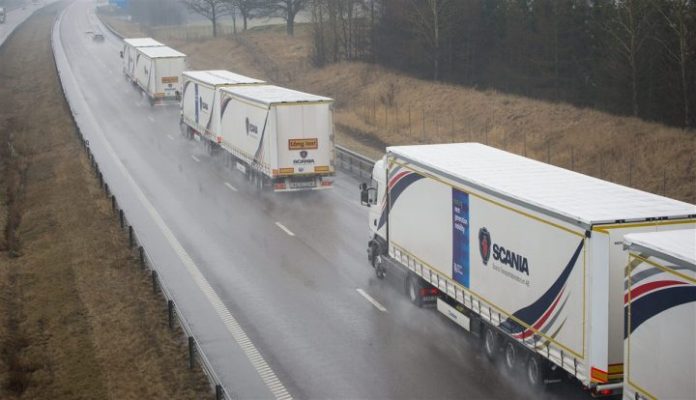U.S. firm Peloton Technology, which focuses on connected and automated vehicle technology, has unveiled its vision for doubling the productivity of drivers through the development of its new Level 4 Automated Following solution.
“We’ve taken a different approach to commercial introduction of automation in class 8 vehicles,” said Peloton Technology CEO Josh Switkes. “We see the drivers as the world’s best sensors, and we are leveraging this to enable today’s drivers to be more productive through automated following platoons.”
Peloton’s Automated Following is an advanced platooning system, using vehicle-to-vehicle (V2V) technology to enable a single driver to drive a pair of vehicles, the firm said.
Platooning and automated following systems work by utilizing V2V communications and radar-based active braking systems, combined with vehicle control algorithms. Peloton’s proprietary technologies link pairs of heavy trucks for connected driving that improves aerodynamics, fuel economy, and safety, the company said.
Peloton’s Level 1 (driver assistive) system, PlatoonPro, has a driver in both the lead and follow trucks. The driver in the follow truck steers, but the system controls the powertrain and brakes to manage the following distance very precisely and to provide immediate reaction to whatever acceleration or braking the lead truck performs.
PlatoonPro has now operated with 6 customers and additional customer fleet trials are underway, the company said.
Leveraging the company’s experience in deploying that commercial L1 platooning system, Peloton’s new Automated Following system is an SAE Level 4 autonomous solution that connects a fully-automated follow truck with a driver-controlled lead truck to platoon. The V2V link allows the human-driven lead truck to guide the steering, acceleration and braking of the follow truck and connects the safety systems between the trucks with minimal latency, according to the company.
Peloton highlighted that it will be able to bring this solution to broad applicability for the industry on a rapidly increasing set of routes, weather conditions, and traffic conditions, expanding these operations much more rapidly than standalone (single vehicle) L4 solutions.
Peloton also said that its vision with the new L4 Automated Following product is to develop and commercially deploy a solution that will enable drivers to benefit from the ongoing commercial driver shortage by doubling the amount of freight they can haul in a single trip.
Truck platooning involves a number of trucks equipped with state-of-the-art driving support systems. The vehicles move in a group or platoon with the trucks driven by smart technology and communicating with one another.
Grouping vehicles into platoons is a method of increasing the capacity of roads. Platoons decrease the distances between cars or trucks using electronic, and possibly mechanical, coupling. This capability can allow many cars or trucks to accelerate or brake simultaneously. Vehicles can follow each other more closely than with human drivers, because less reaction distance is needed than human drivers require.
With the trucks braking immediately, with near-zero reaction time, platooning can also improve traffic safety. Platooning is also a cost-saver as the trucks drive close together at a constant speed. This means lower fuel consumption and fewer carbon dioxide emissions. According to European Truck Platooning, platooning efficiently boosts traffic flows thereby reducing tail-backs.
The impact of truck platooning goes far beyond the transport sector. Automated driving and smart mobility also offer realistic chances to optimize the labor market, logistics and industry, the European entity said.
Governments, entities and companies in the United States and Europe are already active in the truck platooning field.

